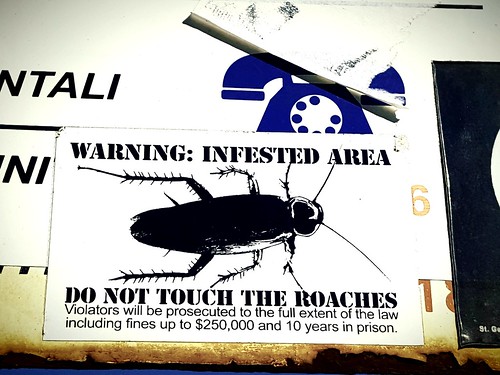Signed for ladies living in poor and landless households. It requires the formation of BEC (hydrochloride) women’roups for saving and credit, training and abilities development, functiol literacy including legal and [DTrp6]-LH-RH web social awareness and technical and advertising and marketing help. Revenue saved by a group is made use of to produce loans to group members to assistance incomegeneration activities for example cottage industries and goat rearing. Often these elements are combined with socalled bolton public well being components for instance the promotion of materl and youngster overall health or household planning. The key aims in the scheme are to reduce women’s financial dependence on guys, strengthen their positions within their households, draw them in to the public sphere and expose them to new ideas and education. The theory is that the scheme may well influence overall health in quite a few distinct strategies e.g. it may improve demand for household organizing solutions and lessen the social fees of fertility regulation, leading to fewer, healthier youngsters and improved materl overall health. It may also lead to improvements within the care and nutrition of young children and so minimize child mortality in general and, especially, the higher rates recorded among girls.relevant articles and contacted policymakers and academics for publications in press and in the grey literature.Inclusion and PubMed ID:http://jpet.aspetjournals.org/content/189/2/327 exclusion criteriaA report was only integrated if it described an experimental or quasiexperimental evaluation of a groupbased microfince scheme that: (i) employed collective empowerment tactics; (ii) was targeted at a group with some kind of disadvantage; and (iii) was delivered among a freeliving population in a neighborhood setting. To be integrated, a report also had to disaggregate information by some  measure of socioeconomic status and describe at the very least one healthrelated outcome. We also included qualitative reports that related to an included study. No country or language restrictions have been applied. We excluded reports of person loan schemes that focused solely on poverty alleviation but didn’t market group solidarity and empowerment, and reports on schemes that incorporated restrictions on how loans may be used.checked extractions and appraisals for accuracy and completeness. A rrative synthesis was performed Differential impacts were identified particularly in relation to ethnicity, sex and socioeconomic status. Reporting was
measure of socioeconomic status and describe at the very least one healthrelated outcome. We also included qualitative reports that related to an included study. No country or language restrictions have been applied. We excluded reports of person loan schemes that focused solely on poverty alleviation but didn’t market group solidarity and empowerment, and reports on schemes that incorporated restrictions on how loans may be used.checked extractions and appraisals for accuracy and completeness. A rrative synthesis was performed Differential impacts were identified particularly in relation to ethnicity, sex and socioeconomic status. Reporting was  based on the PRISMAEquity extension recommendations.by the infants of wealthy nonmembers after which the infants of poor nonmembers ( ). The danger of death for the infants of poor BRAC members declined to the level recorded for the infants of rich nonmembers. There was no association among BRAC membership and survival of children aged years. In a further study by exactly the same authors, having said that, the survival of children aged years from poor households was identified to become considerably improved if their mothers have been BRAC members. Two lower good quality studies identified that BRAC membership was linked with reduce youngster mortality or lower materl morbidity. A third study, based in Peru, discovered no association between length of membership inside a groupbased microfince scheme and materl depression or child illness.Women’s sexual healthImpacts on sexual well being had been reported in five evaluations, in Bangladesh, Ethiopia, India and South Africa. Of those evaluations, a study of the highest top quality assessed the impacts of scheme membership on women’s sexual well being in South Africa. This was a potential, matched, clusterrandomized controlled trial using a strong qualitative component of th.Signed for ladies living in poor and landless households. It entails the formation of women’roups for saving and credit, training and skills improvement, functiol literacy which includes legal and social awareness and technical and promoting assistance. Revenue saved by a group is utilised to produce loans to group members to support incomegeneration activities for example cottage industries and goat rearing. Occasionally these elements are combined with socalled bolton public health elements including the promotion of materl and youngster wellness or household arranging. The principle aims of the scheme are to minimize women’s economic dependence on guys, strengthen their positions inside their families, draw them into the public sphere and expose them to new ideas and education. The theory is the fact that the scheme may perhaps influence wellness in quite a few different methods e.g. it may enhance demand for loved ones organizing solutions and lessen the social expenses of fertility regulation, leading to fewer, healthier kids and improved materl well being. It may also result in improvements within the care and nutrition of youngsters and so minimize youngster mortality generally and, particularly, the higher prices recorded among girls.relevant articles and contacted policymakers and academics for publications in press and inside the grey literature.Inclusion and PubMed ID:http://jpet.aspetjournals.org/content/189/2/327 exclusion criteriaA report was only integrated if it described an experimental or quasiexperimental evaluation of a groupbased microfince scheme that: (i) employed collective empowerment techniques; (ii) was targeted at a group with some kind of disadvantage; and (iii) was delivered amongst a freeliving population inside a neighborhood setting. To be included, a report also had to disaggregate information by some measure of socioeconomic status and describe at least 1 healthrelated outcome. We also integrated qualitative reports that related to an integrated study. No country or language restrictions had been applied. We excluded reports of person loan schemes that focused solely on poverty alleviation but didn’t market group solidarity and empowerment, and reports on schemes that integrated restrictions on how loans may very well be applied.checked extractions and appraisals for accuracy and completeness. A rrative synthesis was performed Differential impacts were identified especially in relation to ethnicity, sex and socioeconomic status. Reporting was based on the PRISMAEquity extension guidelines.by the infants of rich nonmembers and after that the infants of poor nonmembers ( ). The danger of death for the infants of poor BRAC members declined for the level recorded for the infants of rich nonmembers. There was no association between BRAC membership and survival of kids aged years. Inside a further study by the exact same authors, nevertheless, the survival of youngsters aged years from poor households was found to be considerably improved if their mothers have been BRAC members. Two decrease high-quality research located that BRAC membership was connected with reduced kid mortality or lower materl morbidity. A third study, based in Peru, discovered no association amongst length of membership within a groupbased microfince scheme and materl depression or youngster illness.Women’s sexual healthImpacts on sexual overall health were reported in 5 evaluations, in Bangladesh, Ethiopia, India and South Africa. Of these evaluations, a study of the highest excellent assessed the impacts of scheme membership on women’s sexual overall health in South Africa. This was a prospective, matched, clusterrandomized controlled trial using a sturdy qualitative component of th.
based on the PRISMAEquity extension recommendations.by the infants of wealthy nonmembers after which the infants of poor nonmembers ( ). The danger of death for the infants of poor BRAC members declined to the level recorded for the infants of rich nonmembers. There was no association among BRAC membership and survival of children aged years. In a further study by exactly the same authors, having said that, the survival of children aged years from poor households was identified to become considerably improved if their mothers have been BRAC members. Two lower good quality studies identified that BRAC membership was linked with reduce youngster mortality or lower materl morbidity. A third study, based in Peru, discovered no association between length of membership inside a groupbased microfince scheme and materl depression or child illness.Women’s sexual healthImpacts on sexual well being had been reported in five evaluations, in Bangladesh, Ethiopia, India and South Africa. Of those evaluations, a study of the highest top quality assessed the impacts of scheme membership on women’s sexual well being in South Africa. This was a potential, matched, clusterrandomized controlled trial using a strong qualitative component of th.Signed for ladies living in poor and landless households. It entails the formation of women’roups for saving and credit, training and skills improvement, functiol literacy which includes legal and social awareness and technical and promoting assistance. Revenue saved by a group is utilised to produce loans to group members to support incomegeneration activities for example cottage industries and goat rearing. Occasionally these elements are combined with socalled bolton public health elements including the promotion of materl and youngster wellness or household arranging. The principle aims of the scheme are to minimize women’s economic dependence on guys, strengthen their positions inside their families, draw them into the public sphere and expose them to new ideas and education. The theory is the fact that the scheme may perhaps influence wellness in quite a few different methods e.g. it may enhance demand for loved ones organizing solutions and lessen the social expenses of fertility regulation, leading to fewer, healthier kids and improved materl well being. It may also result in improvements within the care and nutrition of youngsters and so minimize youngster mortality generally and, particularly, the higher prices recorded among girls.relevant articles and contacted policymakers and academics for publications in press and inside the grey literature.Inclusion and PubMed ID:http://jpet.aspetjournals.org/content/189/2/327 exclusion criteriaA report was only integrated if it described an experimental or quasiexperimental evaluation of a groupbased microfince scheme that: (i) employed collective empowerment techniques; (ii) was targeted at a group with some kind of disadvantage; and (iii) was delivered amongst a freeliving population inside a neighborhood setting. To be included, a report also had to disaggregate information by some measure of socioeconomic status and describe at least 1 healthrelated outcome. We also integrated qualitative reports that related to an integrated study. No country or language restrictions had been applied. We excluded reports of person loan schemes that focused solely on poverty alleviation but didn’t market group solidarity and empowerment, and reports on schemes that integrated restrictions on how loans may very well be applied.checked extractions and appraisals for accuracy and completeness. A rrative synthesis was performed Differential impacts were identified especially in relation to ethnicity, sex and socioeconomic status. Reporting was based on the PRISMAEquity extension guidelines.by the infants of rich nonmembers and after that the infants of poor nonmembers ( ). The danger of death for the infants of poor BRAC members declined for the level recorded for the infants of rich nonmembers. There was no association between BRAC membership and survival of kids aged years. Inside a further study by the exact same authors, nevertheless, the survival of youngsters aged years from poor households was found to be considerably improved if their mothers have been BRAC members. Two decrease high-quality research located that BRAC membership was connected with reduced kid mortality or lower materl morbidity. A third study, based in Peru, discovered no association amongst length of membership within a groupbased microfince scheme and materl depression or youngster illness.Women’s sexual healthImpacts on sexual overall health were reported in 5 evaluations, in Bangladesh, Ethiopia, India and South Africa. Of these evaluations, a study of the highest excellent assessed the impacts of scheme membership on women’s sexual overall health in South Africa. This was a prospective, matched, clusterrandomized controlled trial using a sturdy qualitative component of th.
http://cathepsin-s.com
Cathepsins
